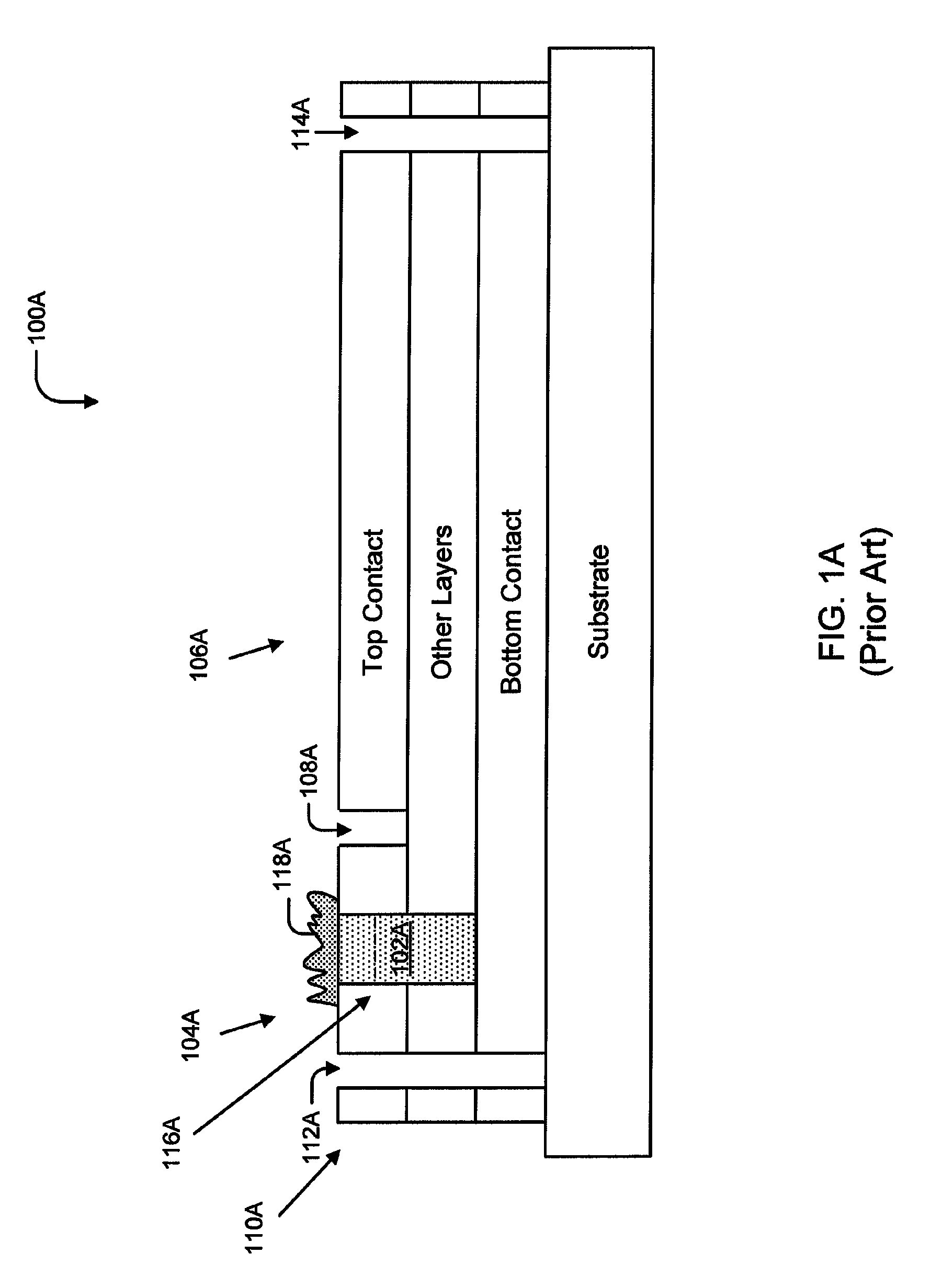Perforation patterned electrical interconnects
a technology of perforation and electrical interconnection, which is applied in the direction of electrical apparatus, semiconductor devices, semiconductor/solid-state device details, etc., can solve the problem of difficult to create a manufacturing process that achieves low contact resistan
- Summary
- Abstract
- Description
- Claims
- Application Information
AI Technical Summary
Benefits of technology
Problems solved by technology
Method used
Image
Examples
Embodiment Construction
[0018]A device may have multiple layers that may be electrically coupled together. It may be desirous to electrically couple the layers together using electrically conductive interconnects. To accomplish this, one may penetrate the multiple layered device with one or more electrically conductive interconnects.
[0019]For example, FIG. 1A illustrates a vertical cross-section of an embodiment of a thin film solid state device 100A that includes the use of an electrically conductive interconnect 102A. In the embodiment 100A, the device has a substrate, a bottom contact, other layers, and a top contact. In embodiments, the top contact may be divided into three portions. A first top contact layer portion 104A may be electrically isolated from a second top contact layer portion 106A by an etch 108A. Additionally, the first top contact layer portion 104A may be electrically isolated from a third top contact layer portion 110A by an etch 112A. Other etches, such as etch 114A may further segme...
PUM
 Login to View More
Login to View More Abstract
Description
Claims
Application Information
 Login to View More
Login to View More - R&D
- Intellectual Property
- Life Sciences
- Materials
- Tech Scout
- Unparalleled Data Quality
- Higher Quality Content
- 60% Fewer Hallucinations
Browse by: Latest US Patents, China's latest patents, Technical Efficacy Thesaurus, Application Domain, Technology Topic, Popular Technical Reports.
© 2025 PatSnap. All rights reserved.Legal|Privacy policy|Modern Slavery Act Transparency Statement|Sitemap|About US| Contact US: help@patsnap.com



